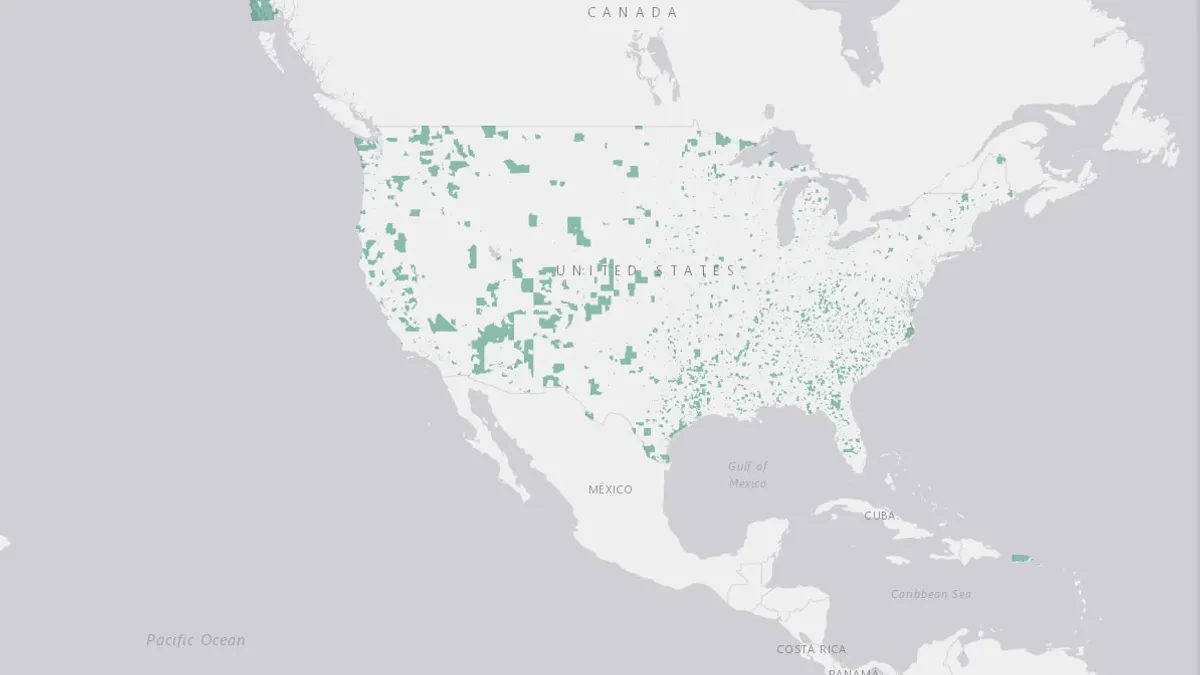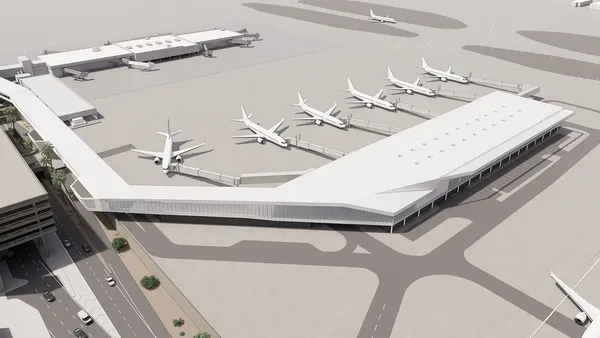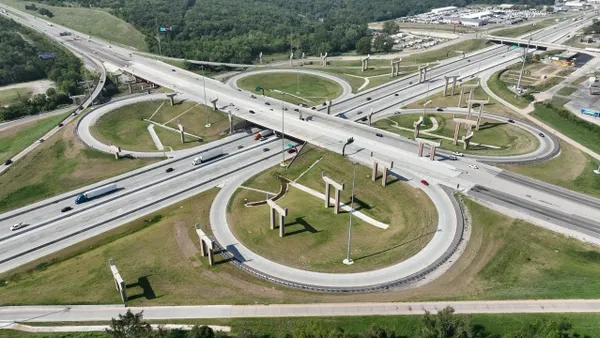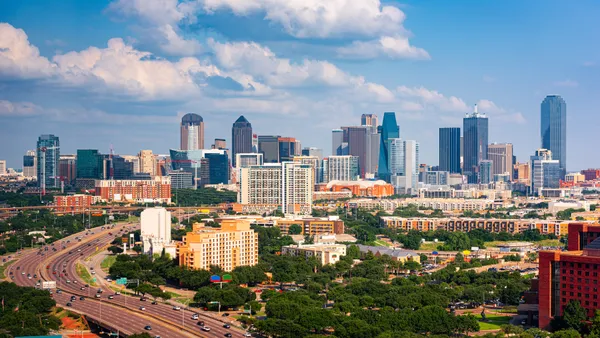Dive Brief:
- To encourage investment in "opportunity zones," the USDOT introduced an interactive map showing major federal infrastructure projects in and around areas designated as such, which have been designated as economically distressed, low-income communities where new investments, under certain conditions, are eligible for preferential tax treatment.
- The map provides information about airports, interstate exits, bridges, intercity bus stations, Amtrak stations and the rail company's industrial properties, commuter and light rail stations, intermodal rail and marine facilities, major ports, the National Highway System and rail sidings, which are low-speed track sections.
- Since opportunity zones were established by the 2017 Tax Cut and Jobs Act, the USDOT has awarded $2 billion via 13 Notices of Funding Opportunity directed at underserved, low-income rural and urban areas. There are approximately 8,700 of these zones nationwide.
Dive Insight:
Communities qualify as opportunity zones if they are nominated for the designation by their states and are certified by the Secretary of the U.S. Treasury. The zones carry significant tax benefits for businesses and others.
When the federal government can sweeten the deal for investors and developers by upgrading or building infrastructure near opportunity zones, the need for construction services is almost certain, whether the contractor is an expert in energy-related projects like solar farms or traditional bricks-and mortar-production facilities like craft breweries.
At the end of December, for example, the U.S. Department of Commerce’s Economic Development Administration (EDA) awarded the Massachusetts Development Finance Agency in Boston a $550,000 grant to make infrastructure improvements that will support a new 17-acre industrial site within a zone in Belchertown, Massachusetts. The grant will pay for construction of an electrical feed to the new development, water main replacements and a new industrial cul-de-sac and stormwater management system that will help lay the groundwork for an industrial brewery and, hopefully, attract other businesses.
The development, helped along by the $550,000 investment, according to the EDA, is expected to draw $19.5 million in private money and create more than 260 jobs.
"For governments to make this program work," said attorney Ronald Fieldstone, partner at Saul Ewing Arnstein & Lehr in Miami, "they have to invest money. If you create the infrastructure, you're encouraging development near opportunity zones." And more development means land values likely will increase, he said. That's one more incentive for investors.
Fieldstone said most opportunity zones are located in urban areas, where there are usually higher concentrations of low-income individuals and unemployment.
Investors, he said, will likely check out the USDOT's map and act on opportunities if they are in locations where it is economically viable to build. "People don't go to opportunity zones to lose money," he said.
Opportunity zones have also been the impetus for new business ventures as well. Developers Clayco and Farpoint Development, through their joint venture Decennial Group, announced in April that they would invest $1 billion during the next three years in opportunity zone projects in Midwestern states and as much as $20 billion during the next decade. One of the projects might be Farpoint's massive $2 billion Burnham Lakefront development on the South Side of Chicago.
Thus far, the Chicago project is likely to include several developers and feature 650,000 square feet of residential space, a data center, a 500,000-square-foot life sciences campus and affordable housing.














